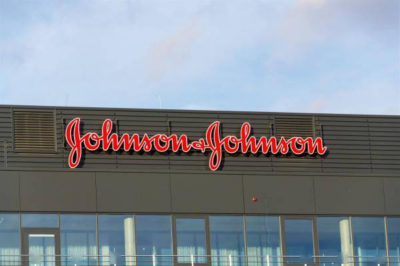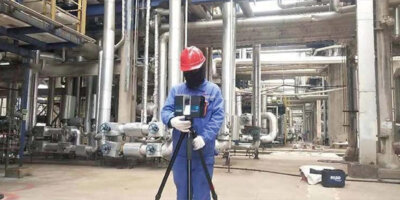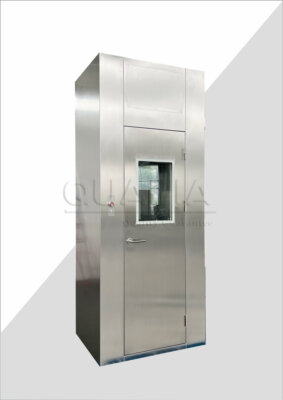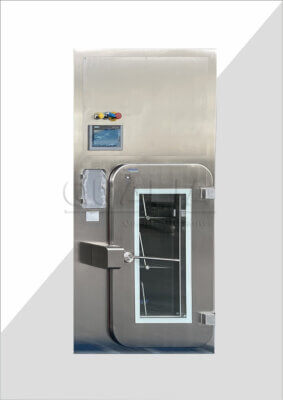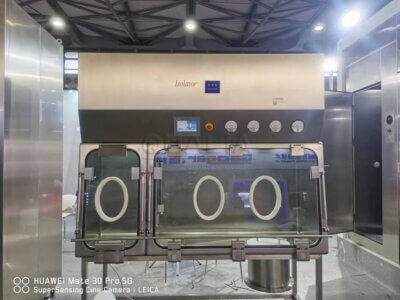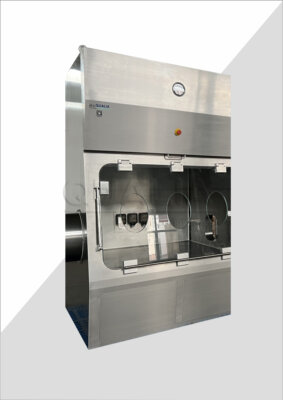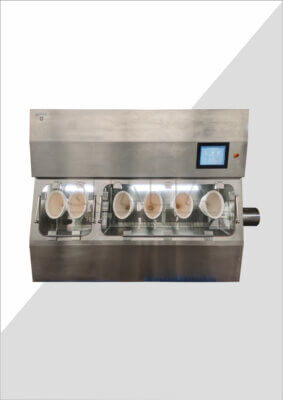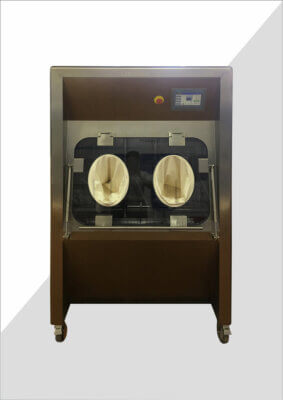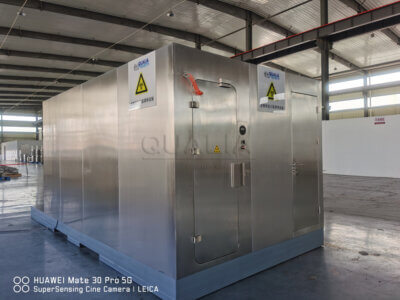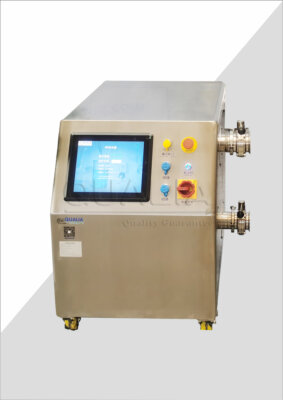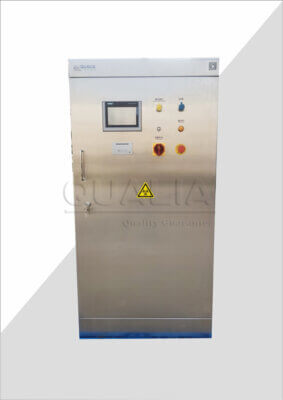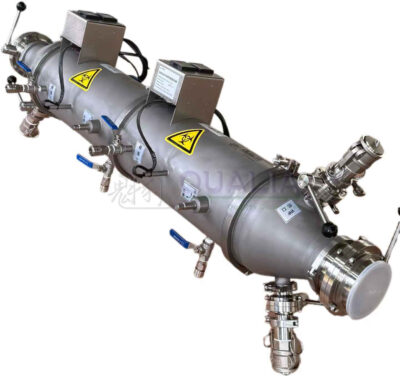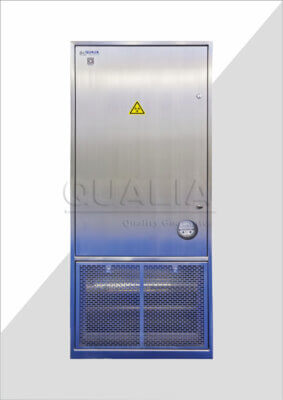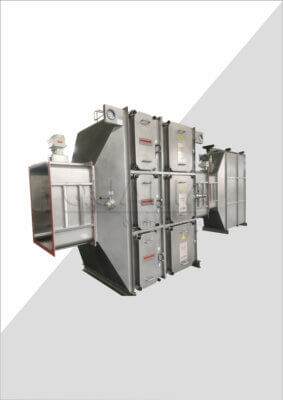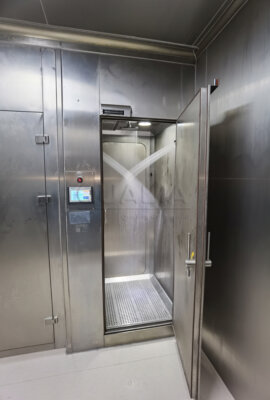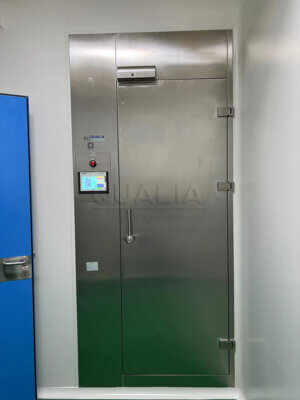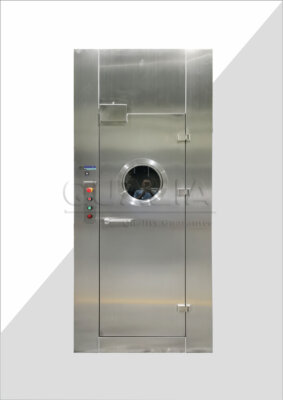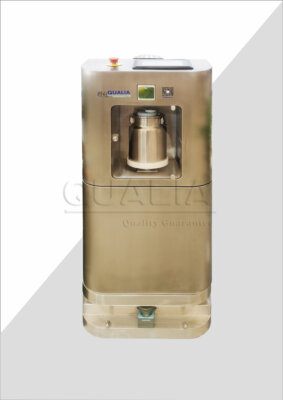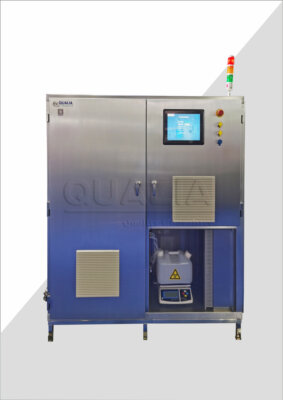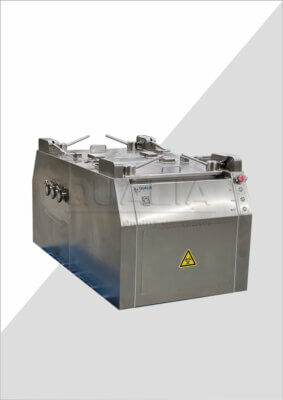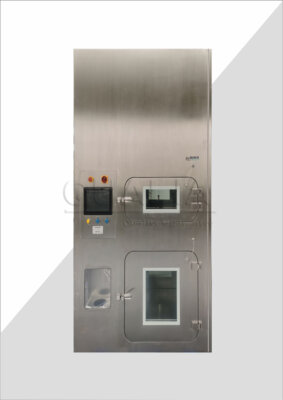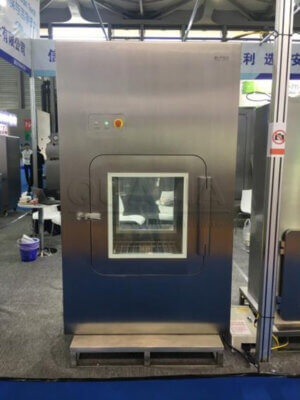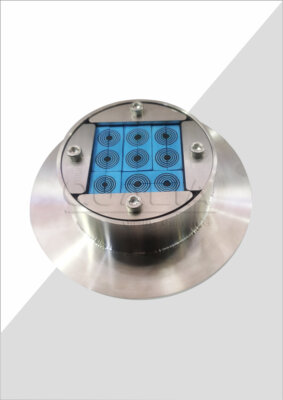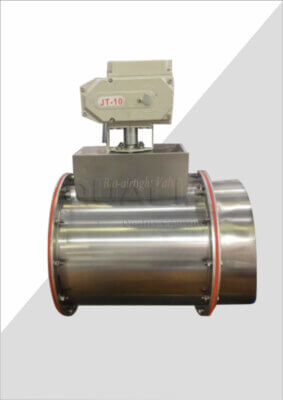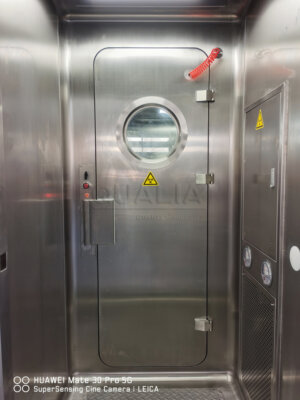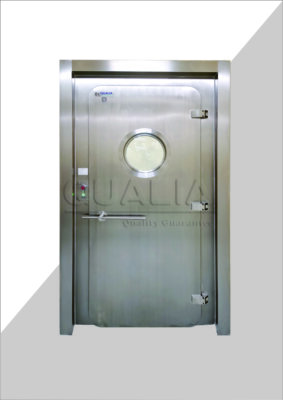In highly regulated environments like pharmaceutical manufacturing and biocontainment facilities, maintaining proper contamination control isn’t just a best practice—it’s a critical compliance requirement. Validated APR systems represent the gold standard for contamination control, yet many facilities struggle with comprehensive validation protocols and ongoing audit requirements. Recent industry data indicates that over 60% of regulatory citations stem from inadequate door sealing system documentation and validation gaps.
The consequences of improper APR door validation extend far beyond regulatory fines. A single contamination breach can result in product recalls costing millions, facility shutdowns lasting weeks, and irreparable damage to organizational reputation. Manufacturing delays from validation failures have increased 23% over the past three years, with average remediation costs exceeding $150,000 per incident.
This comprehensive guide provides proven methodologies for establishing robust APR door validation protocols, implementing systematic sealing system audit procedures, and maintaining documentation standards that exceed regulatory expectations. You’ll discover practical audit checklists, troubleshooting frameworks, and expert insights that transform validation from a compliance burden into a competitive advantage.
What Are Validated APR Door Sealing Systems?
Air Pressure Relationship (APR) door sealing systems maintain critical pressure differentials between controlled environments through sophisticated mechanical and electronic components. These validated door systems integrate multiple sealing mechanisms, pressure sensors, and automated controls to prevent cross-contamination while enabling personnel and material transfer.
Core Components and Functionality
Modern APR systems incorporate three primary sealing layers: perimeter gaskets, threshold seals, and pressure-activated secondary seals. The perimeter gaskets provide the primary containment barrier, typically manufactured from medical-grade silicone or EPDM materials rated for continuous operation at pressures up to 2.5 inches of water column. Threshold seals address the challenging bottom door interface, where traditional gaskets often fail due to foot traffic and equipment movement.
QUALIA Bio-Tech has pioneered advanced sealing technologies that achieve leak rates below 0.1% at design pressure differentials, significantly exceeding industry standards. Their systems integrate real-time pressure monitoring with automated seal adjustment, maintaining optimal performance throughout operational cycles.
Performance Standards and Validation Requirements
Validated APR systems must demonstrate consistent performance across multiple operational parameters. Key validation metrics include seal integrity at specified pressure differentials, response time to pressure fluctuations, and long-term durability under cycling conditions. FDA guidance documents require systems to maintain pressure differentials within ±10% of design specifications during normal operation.
| Validation Parameter | Acceptance Criteria | Test Frequency | Documentation Required |
|---|---|---|---|
| Pressure Differential | ±10% of design spec | Daily | Continuous monitoring logs |
| Seal Integrity | <0.1% leak rate | Quarterly | Certified test reports |
| Response Time | <30 seconds | Monthly | Automated system logs |
Testing protocols typically involve tracer gas studies using helium or sulfur hexafluoride to quantify actual leak rates under operational conditions. These studies provide objective data demonstrating system performance and identifying potential degradation before critical failures occur.
Why Is APR Door Validation Critical for Facility Compliance?
Regulatory agencies increasingly scrutinize contamination control systems as product complexity and patient safety concerns intensify. The FDA’s updated guidance on sterile manufacturing emphasizes mechanical seal validation as a fundamental component of overall facility validation strategies. Recent inspections reveal that facilities with comprehensive APR validation programs experience 40% fewer regulatory citations compared to those with basic compliance approaches.
Regulatory Framework and Requirements
Current Good Manufacturing Practices (cGMP) require detailed documentation of all systems affecting product quality, including environmental containment systems. APR audit checklist requirements span initial qualification, ongoing performance verification, and change control documentation. The European Medicines Agency (EMA) has established similar requirements, with additional emphasis on risk-based validation approaches.
In our experience working with over 200 pharmaceutical facilities, those implementing proactive validation programs report significantly reduced inspection stress and faster regulatory approval processes. One client achieved a 6-month reduction in facility licensing timeline by demonstrating comprehensive APR system validation during the initial submission phase.
Cost-Benefit Analysis of Comprehensive Validation
While initial APR door validation implementation requires substantial investment, long-term benefits far exceed costs. A recent industry study demonstrated average ROI of 340% over five years for facilities implementing comprehensive validation programs. Cost savings derive from reduced product loss, decreased remediation expenses, and improved operational efficiency.
However, facilities must consider ongoing maintenance and recertification costs, which typically represent 15-20% of initial validation investment annually. These costs can be minimized through strategic vendor partnerships and automated monitoring systems that reduce manual inspection requirements.
How to Conduct Comprehensive APR System Audits?
Systematic sealing system audit procedures ensure ongoing compliance while identifying optimization opportunities. Effective audits combine automated data collection with manual inspection protocols, creating comprehensive system performance profiles. Leading facilities conduct audits quarterly, with abbreviated monthly reviews focusing on critical performance indicators.
Pre-Audit Planning and Preparation
Successful audits begin with thorough preparation, including system documentation review, personnel training verification, and audit tool calibration. Audit teams should include representatives from facilities, quality assurance, and operations departments to ensure comprehensive system evaluation. Documentation review should encompass previous audit reports, maintenance records, and any system modifications since the last audit.
Critical preparation elements include verifying calibration status of all test equipment, confirming availability of spare sealing components for immediate replacement if required, and scheduling audits during appropriate operational periods to minimize production disruption.
Field Testing and Data Collection
Comprehensive APR audit checklist procedures incorporate multiple testing methodologies to validate system performance. Pressure differential measurements using certified gauges provide baseline performance data, while tracer gas testing quantifies actual seal effectiveness. Thermal imaging identifies potential seal degradation through temperature variations indicating air leakage paths.
“Effective APR auditing requires combining quantitative measurements with qualitative observations. The best auditors develop an intuitive sense for system performance that complements technical data.” – Dr. Sarah Chen, Contamination Control Specialist
Visual inspection remains crucial despite automated monitoring capabilities. Experienced auditors identify seal wear patterns, alignment issues, and component degradation that may not yet impact measured performance but indicate future maintenance requirements.
| Audit Component | Testing Method | Frequency | Equipment Required |
|---|---|---|---|
| Pressure Integrity | Digital manometer | Each audit | Certified gauge ±0.001″ WC |
| Seal Effectiveness | Tracer gas testing | Quarterly | Gas detector, calibration gas |
| Visual Inspection | Systematic examination | Each audit | Inspection checklist, camera |
| Performance Trends | Data analysis | Each audit | Historical data, analysis software |
What Documentation Standards Ensure Regulatory Compliance?
Comprehensive documentation transforms validated door systems from simple mechanical components into verifiable compliance assets. Regulatory agencies expect detailed records demonstrating not only current performance but also historical trends and corrective actions. Documentation requirements span initial qualification through ongoing maintenance and eventual system replacement.
Validation Documentation Hierarchy
Mechanical seal validation documentation follows a hierarchical structure beginning with User Requirements Specifications (URS) and progressing through Design Qualification (DQ), Installation Qualification (IQ), Operational Qualification (OQ), and Performance Qualification (PQ). Each level builds upon previous documentation, creating comprehensive system validation packages.
The URS establishes fundamental performance requirements, including pressure differentials, environmental conditions, and operational constraints. DQ documentation demonstrates that system design meets specified requirements, while IQ records verify proper installation and configuration. OQ testing confirms system functionality across operational ranges, and PQ documentation demonstrates sustained performance over extended periods.
Electronic Record Management Systems
Modern facilities increasingly rely on electronic document management systems to maintain validation records. These systems provide several advantages over paper-based documentation, including automated revision control, electronic signatures, and integration with facility automation systems. However, they require robust cybersecurity measures and regular backup procedures to ensure data integrity.
It’s worth noting that electronic systems must comply with 21 CFR Part 11 requirements for electronic records and signatures, adding complexity to system implementation. Many facilities adopt hybrid approaches, maintaining critical records electronically while using paper documentation for routine maintenance activities.
How Do Mechanical Seals Impact APR Performance?
Mechanical seal validation represents perhaps the most critical aspect of overall APR system performance. Seals provide the physical barrier preventing cross-contamination, yet they’re subject to continuous wear from thermal cycling, mechanical stress, and chemical exposure. Understanding seal performance characteristics enables predictive maintenance strategies that prevent costly failures.
Seal Material Selection and Performance
Advanced APR door sealing systems utilize specialized materials engineered for specific environmental conditions. Pharmaceutical applications typically require USP Class VI certified materials offering chemical resistance, low particle generation, and extended service life. Recent material science advances have produced seals maintaining effectiveness for over 100,000 operational cycles while exhibiting leak rates below 0.05%.
Temperature stability becomes particularly critical in facilities experiencing significant thermal variations. Standard EPDM seals may fail prematurely in applications with temperature swings exceeding 40°F, while specialized fluoroelastomer formulations maintain seal integrity across temperature ranges from -20°F to 200°F.
Installation and Maintenance Considerations
Proper seal installation significantly impacts long-term performance. Even minor installation errors can reduce seal effectiveness by 50% or more, highlighting the importance of trained installation technicians and comprehensive installation procedures. Advanced mechanical seal systems incorporate self-aligning features that minimize installation sensitivity while maintaining superior sealing performance.
Maintenance scheduling should consider both time-based and condition-based factors. While manufacturer recommendations typically suggest annual seal replacement, facilities monitoring seal performance data often extend replacement intervals significantly without compromising performance. Condition monitoring approaches utilizing seal compression measurements and leak detection can optimize maintenance timing.
A case study from a major pharmaceutical manufacturer demonstrated 34% maintenance cost reduction by implementing condition-based seal replacement protocols. Their facility achieved average seal service life of 18 months compared to the previous 12-month replacement schedule, while maintaining leak rates well below specification limits.
What Are the Key Components of an Effective Audit Checklist?
Comprehensive APR audit checklist development requires balancing thoroughness with practical implementation constraints. Effective checklists incorporate both quantitative measurements and qualitative assessments while remaining manageable for routine facility staff execution. Leading facilities develop tiered checklists addressing different audit frequencies and complexity levels.
Essential Checklist Elements
Primary checklist categories should encompass seal integrity verification, pressure differential confirmation, control system functionality, and documentation review. Each category requires specific procedures, acceptance criteria, and corrective action protocols. Seal integrity verification involves visual inspection, compression measurement, and leak testing using standardized procedures.
Pressure differential confirmation extends beyond simple gauge readings to include system response testing, alarm functionality verification, and trend analysis. Control system functionality assessment encompasses sensor calibration verification, alarm testing, and automated response validation. Documentation review ensures maintenance records, calibration certificates, and previous audit reports remain current and complete.
Risk-Based Checklist Prioritization
Modern audit approaches emphasize risk-based prioritization, focusing detailed attention on system components with highest failure probability or greatest impact potential. Validated APR systems serving critical manufacturing areas require more stringent audit procedures compared to those protecting general laboratory spaces.
| Risk Level | Audit Frequency | Checklist Items | Documentation Required |
|---|---|---|---|
| Critical | Monthly | 47 items | Full report |
| High | Quarterly | 32 items | Summary report |
| Standard | Semi-annual | 21 items | Exception report |
This tiered approach optimizes resource allocation while maintaining comprehensive system oversight. Critical areas typically include sterile manufacturing suites, biological safety laboratories, and containment facilities handling potent compounds.
How to Troubleshoot Common APR Validation Failures?
Sealing system audit procedures frequently identify common failure modes that can be addressed through systematic troubleshooting approaches. Understanding typical failure patterns enables rapid problem resolution while minimizing operational disruption. The most frequent issues involve seal degradation, pressure sensor drift, and control system malfunctions.
Systematic Diagnostic Procedures
Pressure differential failures often stem from multiple contributing factors requiring systematic evaluation. Initial diagnostic steps should confirm actual pressure conditions using independent measurement devices before investigating potential causes. HVAC system imbalances frequently masquerade as APR door failures, emphasizing the importance of comprehensive system assessment.
Seal-related failures typically manifest gradually through increasing leak rates before complete failure occurs. Trending historical performance data enables predictive maintenance approaches that address degradation before critical failure. Professional-grade APR sealing systems incorporate diagnostic features that simplify troubleshooting while providing detailed system status information.
Preventive Strategies and Best Practices
Proactive maintenance strategies prevent most APR validation failures while optimizing system performance. Regular calibration of pressure sensors, systematic seal inspection protocols, and trending analysis of system performance data identify potential issues before they impact operations. Facilities implementing comprehensive preventive maintenance programs report 65% fewer emergency repairs compared to reactive maintenance approaches.
Environmental factors significantly influence APR system performance and should be considered during troubleshooting activities. Humidity variations can affect seal performance, while temperature changes impact pressure sensor accuracy. Successful facilities monitor environmental conditions alongside APR system performance to identify correlation patterns enabling better predictive maintenance strategies.
Conclusion
Validated APR systems represent critical infrastructure components requiring systematic validation, comprehensive documentation, and proactive maintenance strategies. This guide has outlined proven methodologies for establishing robust validation protocols, from initial system qualification through ongoing performance monitoring and troubleshooting procedures.
Key takeaways include the importance of risk-based audit approaches that optimize resource allocation while maintaining comprehensive oversight, the critical role of proper documentation in regulatory compliance, and the significant cost benefits achieved through proactive validation programs. Facilities implementing comprehensive APR door validation strategies report substantial improvements in regulatory compliance, operational efficiency, and long-term cost management.
Moving forward, regulatory agencies will likely increase scrutiny of contamination control systems as product complexity continues growing. Facilities investing in advanced validation capabilities today position themselves advantageously for future regulatory requirements while achieving immediate operational benefits through improved system reliability and performance.
Consider your current APR validation approach: Are you meeting today’s regulatory expectations while preparing for tomorrow’s requirements? For facilities seeking comprehensive contamination control solutions, industry-leading APR door systems provide the foundation for successful validation programs that exceed regulatory expectations while optimizing operational performance.
What specific challenges does your facility face in maintaining validated APR systems, and how might systematic validation approaches address these operational concerns?
Frequently Asked Questions
Q: What are Validated APR Door Sealing Systems and why are they important?
A: Validated APR Door Sealing Systems are specialized sealing solutions designed to ensure airtight and secure closures, particularly in controlled environments like cleanrooms or containment areas. Validation confirms these systems perform reliably under operational and emergency conditions, maintaining containment integrity. This validation is critical for compliance with safety, quality, and regulatory standards, preventing contamination or leakage and ensuring safe working conditions.
Q: What should be included in an audit checklist for Validated APR Door Sealing Systems?
A: An effective audit checklist for Validated APR Door Sealing Systems includes:
- Pre-installation verification of door frame and pneumatic systems
- Physical inspections of seals, door alignment, and actuator mechanisms
- Functional testing under normal and emergency scenarios (e.g., power failure)
- Documentation review of calibration certificates, test results, and maintenance logs
- Verification of pressure stability and seal activation timing
Such a checklist ensures all critical components and processes comply with validation criteria and enables systematic audits.
Q: How does proper documentation support the validation and auditing of APR door sealing systems?
A: Proper documentation is essential as it provides complete traceability of the validation process. It includes detailed records of test conditions, measurement results, acceptance criteria, and maintenance activities. This enables:
- Demonstration of regulatory compliance
- Facilitation of troubleshooting and predictive maintenance
- Accurate historical performance tracking
Digital documentation systems enhance data integrity by timestamping entries and preventing unauthorized changes, supporting easier audits and compliance reporting.
Q: What are the key functional tests performed on Validated APR Door Sealing Systems during audits?
A: Key functional tests typically cover:
- Seal activation timing and consistency across multiple cycles
- Maintenance of required pressure differentials to ensure airtight sealing
- Alarm system verification to confirm alert functionality on failure
- Emergency condition simulations including power loss and pneumatic interruptions
These tests verify that the sealing system continuously performs to specification, maintaining containment and safety.
Q: What common issues are auditors looking for when inspecting APR Door Sealing Systems?
A: Auditors focus on:
- Seal integrity and physical condition (no wear or damage)
- Proper door frame alignment and actuator performance
- Stable pneumatic supply pressure with minimal fluctuation
- Completeness and accuracy of validation documentation
- Evidence of timely maintenance and calibration activities
Addressing these issues ensures the system remains compliant and fully operational.
Q: Why is it important to have a validated APR door sealing system in regulated environments?
A: Validated APR door sealing systems ensure that environmental barriers perform as required to maintain contamination control, personnel safety, and product integrity, especially in pharmaceutical, healthcare, and high-tech manufacturing settings. Proper validation and consistent auditing help meet strict regulatory standards, avoid costly compliance failures, and reduce the risk of safety incidents related to leakage or breach of controlled environments.
External Resources
- Validated APR Door Sealing Systems | Audit Checklist | Compliance – In-depth overview of validated APR door sealing systems and the essential audit checklist and documentation required for compliance, including pre-installation checks, functional testing, and record-keeping standards.
- Audit Checklist For Store Department | PDF – Although not specific to APR door sealing systems, this document provides a template for systematic audit checklists and documentation practices relevant to controlled environments and compliance management.
- Inspection Form – U.S. Department of Housing and Urban Development (HUD) – Offers an example of standardized inspection checklists that assess door security, seal integrity, and physical condition as part of facility validation protocols.
- PROTECTED DISTRIBUTION SYSTEMS (PDS) – Provides documentation and inspection standards for physical seals and protection systems, relevant for understanding compliance and validation criteria for secure environments.
- Blog – BioSafe Tech by QUALIA – Features articles on advanced biosafety infrastructure, including best practices and compliance methods for door sealing and related audit procedures in technical environments.
- Good Manufacturing Practice Audit Checklist – Presents a model GMP audit checklist which can be adapted for validating door sealing systems and ensuring all documentation meets regulatory standards in English-language facilities.
Related Contents:
- Understanding APR Door Sealing Technology | Types & Applications
- Understanding Pneumatic APR Door Seal Technology
- What Are APR Door Pneumatic Seals and How They Work
- Validated APR Door Sealing Systems | Audit Checklist | Compliance
- Manufacturing APR Door Seal Systems | Industrial Applications
- Food Industry APR Door Sealing | Sanitary Design | Compliance
- Mechanical Seal APR Door Systems | Installation Guide & Setup
- Mechanical Seal APR Doors | Pressure Control & Safety Principles
- What Are Mechanical Seal APR Doors | Basic Components & Functions

